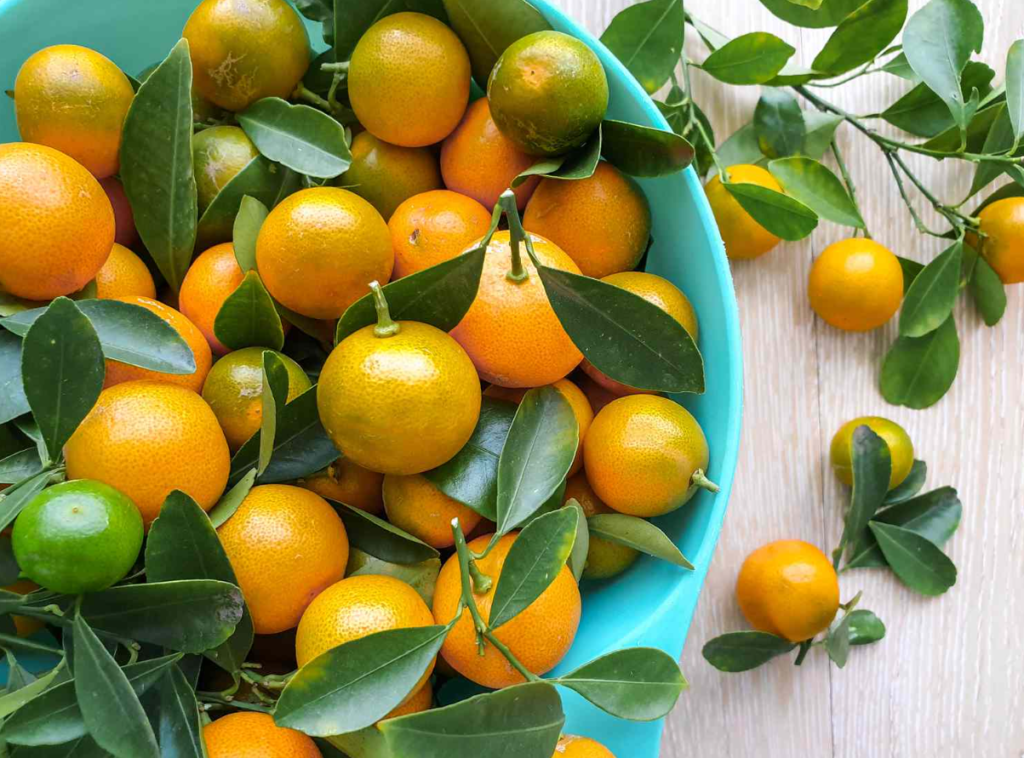Calamansi often referred to as calamondin or calamansi lime, is a small, round citrus fruit widely used in Southeast Asian cuisine. Known for its tart, tangy flavor, calamansi has gained attention beyond the kitchen due to its potential health benefits. But what is calamansi, and why has it become so popular? Whether used as a key ingredient in refreshing drinks like calamansi juice or cultivated as an attractive addition to a garden via the calamansi tree, this citrus fruit offers far more than its size might suggest. Let’s dive deeper into the world of calamansi, exploring its origins, benefits, uses, and how you can incorporate it into your life.
Contents
- 1 Calamansi Profile Summary
- 2 What is Calamansi?
- 3 Calamansi Tree: A Beautiful and Practical Addition to Any Garden
- 4 Health Benefits of Calamansi
- 5 Calamansi in Culinary Use
- 6 Growing Your Own Calamansi Tree
- 7 The Environmental and Cultural Significance of Calamansi
- 8 Conclusion: Calamansi, A Superfruit for Every Household
Calamansi Profile Summary
| Scientific Name | Citrus microcarpa |
|---|---|
| Common Names | Calamondin, Calamansi Lime |
| Origin | Southeast Asia |
| Primary Uses | Juices, condiments, marinades, flavoring agent |
| Health Benefits | Rich in Vitamin C, immune-boosting, digestive aid |
| Growing Conditions | Tropical and subtropical climates |
| Tree Size | 6-25 feet (depending on pruning and care) |
| Fruit Size | Small (about the size of a golf ball) |
| Availability | Common in Southeast Asia, available globally |
What is Calamansi?
Calamansi is a citrus fruit that resembles a small lime but with a distinct flavor profile. Native to Southeast Asia, particularly the Philippines and Malaysia, it has been used for centuries both as a culinary ingredient and a medicinal plant. In appearance, calamansi fruit is about the size of a golf ball with a bright green or yellow-orange rind when ripe. The flavor is a perfect balance of sour and sweet, making it a versatile addition to many dishes, drinks, and even beauty routines.
Botanically, calamansi belongs to the same family as other citrus fruits like limes, lemons, and oranges. However, it has its own unique flavor, which is more complex due to its higher acidity and aromatic qualities. This complexity is what makes calamansi juice so refreshing, and why calamansi is often used in Filipino and Southeast Asian cooking to balance out richer flavors.

Calamansi Tree: A Beautiful and Practical Addition to Any Garden
A calamansi tree is not only a source of delicious, nutritious fruit, but it also makes for an attractive ornamental tree in the garden. The tree typically grows to between 6 and 25 feet in height, though it can be pruned to maintain a smaller size for patios or indoor use. Its lush green leaves, fragrant white flowers, and small, vibrant fruits make the calamansi tree a delightful addition to both home gardens and commercial orchards.
One of the appealing aspects of growing calamansi is its adaptability. It can thrive in tropical and subtropical climates, making it a popular choice for warm regions around the world. For those interested in cultivating their own tree, you can easily find a calamansi tree for sale at many garden centers or specialty nurseries, especially those that focus on tropical plants. However, if you’re growing calamansi in a cooler climate, it will need to be grown in a pot so it can be brought indoors during colder months.
Health Benefits of Calamansi
One of the reasons calamansi is considered a “superfruit” is due to its incredible range of health benefits. While small in size, this citrus fruit packs a nutritional punch, particularly due to its high Vitamin C content and antioxidant properties.
Rich in Vitamin C
Perhaps the most well-known calamansi benefits come from its high levels of Vitamin C, which plays a crucial role in supporting immune function. Vitamin C is known for its ability to boost the body’s defense mechanisms, helping to ward off colds, flu, and other infections. Just a small amount of calamansi juice can provide a significant portion of your daily Vitamin C needs, making it an easy way to stay healthy.
Digestive Aid and Detoxifier
Calamansi juice is often used as a natural digestive aid. Its high acidity can stimulate digestive enzymes, helping to break down food more efficiently. In many Southeast Asian cultures, calamansi is consumed after meals to prevent indigestion and bloating. Additionally, calamansi juice is thought to act as a natural detoxifier, flushing toxins out of the body and supporting overall liver function.
Weight Management
Thanks to its low-calorie content and ability to aid in digestion, calamansi juice is often used as part of weight management strategies. Drinking a glass of diluted calamansi juice in the morning is a popular method for boosting metabolism and starting the day with a refreshing, hydrating beverage.
Skin Care Benefits
Due to its high Vitamin C and antioxidant levels, calamansi is also used in skin care. In some Southeast Asian countries, calamansi is applied topically to lighten dark spots, treat acne, and smooth the skin. The natural acidity in the fruit acts as a gentle exfoliant, helping to brighten and even out the skin tone.
Calamansi in Culinary Use
Calamansi’s distinct flavor makes it a versatile ingredient in various culinary applications. Whether used as a condiment, marinade, or refreshing drink, this citrus fruit can enhance both sweet and savory dishes.
Calamansi Juice: A Refreshing and Nutritious Drink
Calamansi juice is one of the most popular ways to enjoy the fruit. Made by simply squeezing fresh calamansi into a glass of water, this drink can be enjoyed plain or sweetened with sugar or honey. The juice offers a bright, tangy flavor that’s perfect for cooling off on a hot day. In the Philippines, calamansi juice is often consumed as a natural remedy for colds, thanks to its immune-boosting properties.
Beyond just being a drink, calamansi juice can also be used in cooking. It serves as an excellent marinade for meats, especially when combined with soy sauce, garlic, and spices. The acidity in calamansi tenderizes the meat while imparting a delicious, tangy flavor.
Calamansi in Sauces and Marinades
In Filipino cuisine, calamansi is often used to add a burst of flavor to sauces and marinades. One popular dish that uses calamansi is pancit, a traditional Filipino noodle dish. Here, calamansi juice is squeezed over the noodles to enhance the flavors and add brightness to the dish. It is also frequently used in dipping sauces for grilled meats or seafood.
Calamansi’s ability to balance rich, fatty flavors makes it a staple in Southeast Asian kitchens. Its bright acidity cuts through the richness of fried foods, roasted meats, and even desserts, making it an incredibly versatile ingredient.
Growing Your Own Calamansi Tree
Interested in having a constant supply of this citrusy superfruit? Growing your own calamansi tree can be a rewarding experience. While the tree thrives in tropical and subtropical climates, it can also be grown in containers and moved indoors during colder months. Here are a few key tips for successfully growing calamansi:
- Sunlight: Calamansi trees require full sun, so place them in a spot where they receive at least 6-8 hours of direct sunlight daily.
- Soil: Use well-drained soil rich in organic matter. Calamansi trees do not thrive in waterlogged soil, so make sure the pot or ground allows excess water to drain.
- Watering: While these trees enjoy consistent watering, be careful not to overwater. Water the tree thoroughly but allow the soil to dry out slightly between waterings.
- Fertilization: Feed the tree with a balanced citrus fertilizer during the growing season to encourage fruit production.
If you’re in the market for a calamansi tree for sale, check local garden centers or online retailers specializing in tropical plants. Growing your own calamansi not only ensures a fresh supply of this nutrient-packed fruit but also adds an attractive, fragrant tree to your home or garden.
The Environmental and Cultural Significance of Calamansi
In Southeast Asia, particularly the Philippines, calamansi holds cultural significance beyond just its culinary and medicinal uses. The calamansi fruit has long been used in traditional medicine for treating everything from colds to insect bites. Moreover, its use in local cuisine makes it a symbol of home cooking, family gatherings, and the vibrancy of Filipino culture.
Environmentally, calamansi trees play an important role in local ecosystems, as they help support biodiversity. The tree’s flowers attract pollinators, while the fruit provides a natural source of food for various species.
Conclusion: Calamansi, A Superfruit for Every Household
Calamansi may be small in size, but it is packed with flavor, nutrients, and versatility. From its vibrant use in culinary dishes to its powerful health benefits, calamansi is truly a superfruit worth incorporating into your diet and daily routine. Whether you’re sipping on refreshing calamansi juice, experimenting with new recipes, or considering growing your own calamansi tree, this citrus fruit has plenty to offer.
With its immune-boosting properties, digestive benefits, and even potential as a skincare ingredient, calamansi has earned its place among the world’s most beneficial fruits. So, the next time you’re looking to add a little zest to your meals or a boost to your health, turn to calamansi for a natural solution that’s as delicious as it is beneficial.







